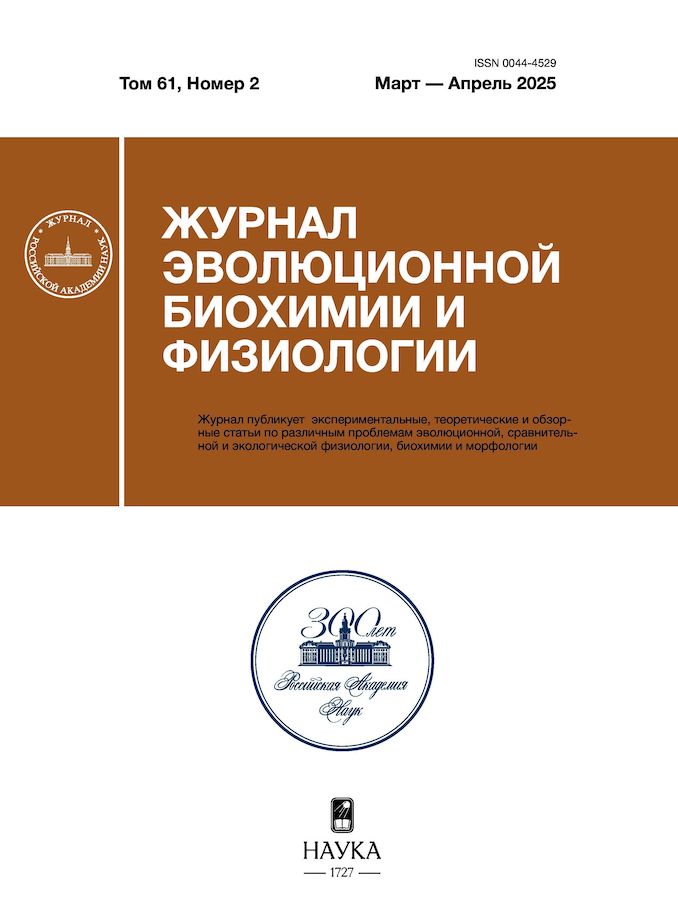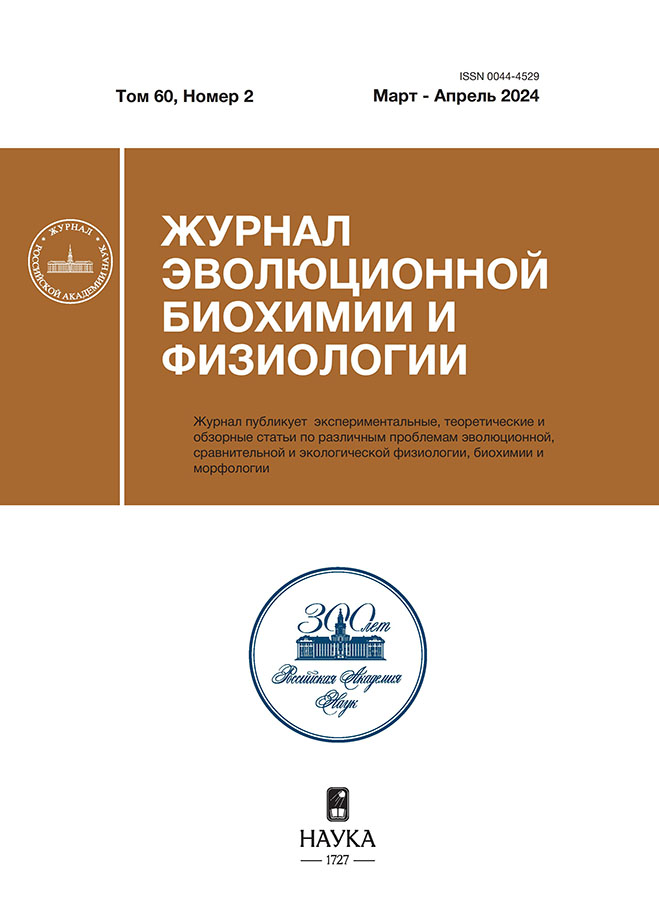Характеристики вызванных потенциалов в разных моделях творческой деятельности
- Авторы: Шемякина Н.В.1, Нагорнова Ж.В.1
-
Учреждения:
- Институт эволюционной физиологии и биохимии им. И.М. Сеченова РАН
- Выпуск: Том 60, № 2 (2024)
- Страницы: 173-184
- Раздел: ЭКСПЕРИМЕНТАЛЬНЫЕ СТАТЬИ
- URL: https://ruspoj.com/0044-4529/article/view/648073
- DOI: https://doi.org/10.31857/S0044452924020022
- EDN: https://elibrary.ru/XATNJV
- ID: 648073
Цитировать
Полный текст
Аннотация
В статье проводится сопоставление результатов трех ЭЭГ/ВП исследований вербальной творческой деятельности, реализованных в единой временной парадигме, но с использованием разных моделей творческих задач. Испытуемые (18–35 лет) выполняли задания – ПОСЛОВИЦЫ (дивергентная творческая задача на преодоление стереотипов долговременной памяти), ОТДАЛЕННЫЕ АССОЦИАЦИИ (условно “конвергентная” творческая задача на активизацию семантических полей для отдаленных по смыслу понятий), АЛЬТЕРНАТИВНОЕ ИСПОЛЬЗОВАНИЕ (дивергентная творческая задача на инициацию ассоциативного поиска). В творческих заданиях от испытуемых требовалось придумать оригинальное окончание пословицы (ПОСЛОВИЦЫ, Pr), найти слово, подходящее к трем предъявленным понятиям из разных семантических полей (RAT), придумать оригинальные способы использования обычных предметов (AUT), а в контрольных – вспомнить общеизвестное окончание пословицы (PrM), перечислить объекты из заданной категории (CAT). В работе анализировали амплитуды вызванных потенциалов (ВП) при сравнении заданий между собой. В задании ПОСЛОВИЦЫ наблюдалась бо́льшая негативность компонента N300 в лобных зонах коры (на интервале 280–346 мс после предъявления стимула), что, вероятно, может отражать торможение стереотипа долговременной памяти. В заданиях ПОСЛОВИЦЫ и ОТДАЛЕННЫЕ АССОЦИАЦИИ семантический поиск и интеграция новой информации в сравнении с извлечением известной информации из памяти характеризовалась меньшими значениями амплитуды поздних компонентов ВП на интервале 698–786 мс. Бóльшая амплитуда поздних компонентов ВП в теменных областях (524–624 мс) при дивергентном мышлении (AUT) может соотноситься с большей образностью данного задания (быстрым возникновением в уме изображений) по сравнению с вербально-абстрактными заданиями на ассоциации и изменение смысла пословиц. Таким образом, можно предположить, что на сравнительно ранних этапах обработки информации в вербальных творческих заданиях проявляется специфика разных моделей творческой деятельности при одинаковой временной парадигме и сходной специфике предъявления зрительных стимулов.
Полный текст
Об авторах
Н. В. Шемякина
Институт эволюционной физиологии и биохимии им. И.М. Сеченова РАН
Автор, ответственный за переписку.
Email: shemyakina_n@mail.ru
Россия, Санкт-Петербург
Ж. В. Нагорнова
Институт эволюционной физиологии и биохимии им. И.М. Сеченова РАН
Email: shemyakina_n@mail.ru
Россия, Санкт-Петербург
Список литературы
- Runco MA, Jaeger GJ (2012) The standard definition of creativity. Creat Res J 24: 92–96. https://doi.org/10.1080/10400419.2012.650092
- Guilford JP (1967) The Nature of Human Intelligence. New York: McGraw-Hill.
- Guilford JP (1962) Potentiality for creativity. Gifted Child Quarterly 6: 87–90.
- Torrance EP (2000). Research review for the Torrance Tests of Creative Thinking Figural and Verbal forms A and B. Bensenville, IL: Scholastic Testing Services.
- Mednick S (1962). The associative basis of the creative process. Psycholog Rev 69:220–232. https://doi.org/10.1037/h0048850
- Wu CL, Huang SY, Chen PZ, Chen HC (2020) A Systematic Review of Creativity-Related Studies Applying the Remote Associates Test From 2000 to 2019. Front Psychol 11:573432. https://doi.org/10.3389/fpsyg.2020.573432
- Vitrano D, Altarriba J, Leblebici-Basar D (2021) Revisiting Mednick’s (1962) Theory of Creativity with a Composite Measure of Creativity: The Effect of Stimulus Type on Word Association Production. J Creat Behavior 55: 925–936. https://doi.org/10.1002/jocb.498
- Бехтерева НП (2006) Магия творчества и психофизиология. Факты, соображения, гипотезы. СПб: Изд-во “Институт мозга человека РАН” 79. [Bekhtereva NP (2006) The magic of creativity and psychophysiology. Facts, considerations, hypotheses. St. Petersburg: Publishing house “Institute of Human Brain RAS” 79. (In Russ)].
- Ушаков ДВ (2011) Психология интеллекта и одаренности. М.: Изд-во “Институт психологии РАН” 464. [Ushakov DV (2011) Psychology of intelligence and talent. M.: Publishing house “Institute of Psychology RAS” 464. (In Russ)].
- Bechtereva NP (2009) The usefulness of psychophysiology in the maintenance of cognitive life. Int J Psychophysiol 73:83–87. https://doi.org/10.1016/j.ijpsycho.2008.03.016
- Kraus B, Cadle C, Simon-Dack S (2019) EEG alpha activity is moderated by the serial order effect during divergent thinking. Biol Psychol 145:84–95. https://doi.org/10.1016/j.biopsycho.2019.04.003
- Agnoli S, Zanon M, Mastria S, Avenanti A, Corazza GE (2020) Predicting response originality through brain activity: An analysis of changes in EEG alpha power during the generation of alternative ideas. Neuroimage 207:116385. https://doi.org/10.1016/j.neuroimage.2019.116385
- Wang M, Hao N, Ku Y, Grabner RH, Fink A (2017) Neural correlates of serial order effect in verbal divergent thinking. Neuropsychologia 99:92–100. https://doi.org/10.1016/j.neuropsychologia.2017.03.001
- Nagy B, Czigler I, Csizmadia P, File D, Fáy N, Gaál ZA (2023) Investigating the involvement of cognitive control processes in innovative and adaptive creativity and their age-related changes. Front Hum Neurosci 17:1033508. https://doi.org/10.3389/fnhum.2023.1033508
- Benedek M, Schickel RJ, Jauk E, Fink A, Neubauer AC (2014) Alpha power increases in right parietal cortex reflects focused internal attention. Neuropsychologia 56:393–400. https://doi.org/10.1016/j.neuropsychologia.2014.02.010
- Heinonen J, Numminen J, Hlushchuk Y, Antell H, Taatila V, Suomala J (2016). Default Mode and Executive Networks Areas: Association with the Serial Order in Divergent Thinking. PLoS One 11: e0162234. https://doi.org/10.1371/journal.pone.0162234
- Zabelina DL, Friedman NP, Andrews-Hanna J. (2019) Unity and diversity of executive functions in creativity. Conscious Cogn 68:47–56. https://doi.org/10.1016/j.concog.2018.12.005
- Palmiero M, Fusi G, Crepaldi M, Borsa VM, Rusconi ML (2022) Divergent thinking and the core executive functions: a state-of-the-art review. Cogn Process 23:341–366. https://doi.org/10.1007/s10339-022-01091-4
- Shemyakina NV, Danko SG, Nagornova ZhV, Starchenko MG, Bechtereva NP (2007) Changes in the power and coherence spectra of the EEG rhythmic components during solution of a verbal creative task of overcoming a stereotype. Hum Physiol 33: 524–530. https://doi.org/10.1134/S0362119707050027
- Shemyakina NV, Nagornova ZV (2020) Does the Instruction “Be Original and Create” Actually Affect the EEG Correlates of Performing Creative Tasks? Hum Physiol 46: 587–596. https://doi.org/10.1134/S0362119720060092
- Bowden EM, Jung-Beeman M (2003) Normative data for 144 compound remote associate problems. Behav Res Methods Instrum Comput 35:634–639. https://doi.org/10.3758/bf03195543
- Razumnikova OM (2007) Creativity related cortex activity in the remote associates task. Brain Res Bull 73:96–102. https://doi.org/10.1016/j.brainresbull.2007.02.008
- Nagornova ZV, Galkin VA, Vasenkina VA, Grokhotova AV, Shemyakina NV (2022). Neurophysiological Characteristics of Alternative Uses Task Performance by Means of ERP and ERS/ERD Data Analysis Depending on the Subject’s Productivity and Originality Levels. Hum Physiol 48: 609–632. https://doi.org/10.1134/S036211972270013X
- Shemyakina NV, Nagornova ZhV (2020) Event-related changes in EEG spectral power corresponding to creative and trivial decisions. Russ J Physiol 106:880–889. https://doi.org/10.31857/S0869813920070067
- Shemyakina NV, Nagornova ZV (2019) EEG “Signs” of Verbal Creative Task Fulfillment with and without Overcoming Self-Induced Stereotypes. Behav Sci (Basel) 10(1):17. https://doi.org/10.3390/bs10010017
- Воронин АН, Галкина ТВ (1994) Диагностика вербальной креативности (адаптация теста Медника). Методы психологической диагностики. Сборник статей. Выпуск 2. Отв. ред. А.Н. Воронин. М: Изд-во “Институт психологии РАН”: 40–81.
- Vigario RN (1997) Extraction of ocular artefacts from EEG using independent component analysis. Electroenceph Clin Neurophysiol 103(3): 395–404. https://doi.org/10.1016/S0013-4694(97)00042-8
- Jung TP, Makeig S, Humphries C, Lee TW, McKeown MJ, Iragui V, Sejnowski TJ (2000) Removing electroencephalographic artifacts by blind source separation. Psychophysiology 37:163–178. https://doi.org/10.1111/1469–8986.3720163
- Tereshchenko EP, Ponomarev VA, Kropotov YD, Müller A (2009) Comparative efficiencies of different methods for removing blink artifacts in analyzing quantitative electroencephalogram and event-related potentials. Hum Physiol 35:241–247. https://doi.org/10.1134/S0362119709020157
- Kozhushko NJ, Nagornova ZV, Evdokimov SA, Shemyakina NV, Ponomarev VA, Tereshchenko EP, Kropotov JD (2018) Specificity of spontaneous EEG associated with different levels of cognitive and communicative dysfunctions in children. Int J Psychophysiol 128:22–30. https://doi.org/10.1016/j.ijpsycho.2018.03.013
- Folstein JR, Van Petten C (2008) Influence of cognitive control and mismatch on the N2 component of the ERP: a review. Psychophysiology. 45:152–170. https://doi.org/10.1111/j.1469–8986.2007.00602.x
- Hinault T, Larcher K, Zazubovits N, Gotman J, Dagher A (2019) Spatio-temporal patterns of cognitive control revealed with simultaneous electroencephalography and functional magnetic resonance imaging. Hum Brain Mapp 40:80–97. https://doi.org/10.1002/hbm.24356
- McPherson WB, Holcomb PJ (1999) An electrophysiological investigation of semantic priming with pictures of real objects. Psychophysiology 36:53–65. https://doi.org/10.1017/s0048577299971196
- Hamm JP, Johnson BW, Kirk IJ (2002) Comparison of the N300 and N400 ERPs to picture stimuli in congruent and incongruent contexts. Clin. Neurophysiol 113:1339–1350. http://dx.doi.org/10.1016/S1388-2457(02)00161-X
- Ma Q, Hu L, Xiao C, Bian J, Jin J, Wang Q (2016) Neural correlates of multimodal metaphor comprehension: Evidence from event-related potentials and time-frequency decompositions. Int J Psychophysiol 109:81–91. https://doi.org/10.1016/j.ijpsycho.2016.09.007
- Franklin MS, Dien J, Neely JH, Huber E, Waterson LD (2007) Semantic priming modulates the N400, N300, and N400RP. Clin Neurophysiol 118:1053–1068. http://dx.doi.org/10.1016/j.clinph.2007.01.012
- Debruille JB (2007) The N400 potential could index a semantic inhibition. Brain Res Rev 56:472–477. https://doi.org/10.1016/j.brainresrev.2007.10.001
- Debruille JB, Ramirez D, Wolf Y, Schaefer A, Nguyen TV, Bacon BA, Renoult L, Brodeur M (2008) Knowledge inhibition and N400: a within- and a between-subjects study with distractor words. Brain Res 1187:167–183. https://doi.org/10.1016/j.brainres.2007.10.021
- Xiao X, Qiu J, Zhang Q (2009) The dissociation of neural circuits in a Stroop task. Neuroreport 20:674–678. https://doi.org/10.1097/WNR.0b013e32832a0a10
- Wei D, Qiu J, Tu S, Tian F, Su Y, Luo Y (2010) Earthquake experience interference effects in a modified Stroop task: an ERP study. Neurosci Lett 474:121–125. https://doi.org/10.1016/j.neulet.2010.03.005
- Wang W, Li B, Gao C, Guo C (2018) The temporal dynamics of perceptual and conceptual fluency on recognition memory. Brain Cogn 127:1–12. https://doi.org/10.1016/j.bandc.2018.07.002.
- Abraham A, Rutter B, Hermann C (2021) Conceptual expansion via novel metaphor processing: An ERP replication and extension study examining individual differences in creativity. Brain Lang 221:105007. https://doi.org/10.1016/j.bandl.2021.105007
- Kröger S, Rutter B, Hill H, Windmann S, Hermann C, Abraham A (2013) An ERP study of passive creative conceptual expansion using a modified alternate uses task. 1Brain Res 1527:189–198. https://doi.org/10.1016/j.brainres.2013.07.007
- Proverbio AM, Crotti N, Zani A, Adorni R (2009) The role of left and right hemispheres in the comprehension of idiomatic language: an electrical neuroimaging study. BMC Neurosci 10:116. https://doi.org/10.1186/1471-2202-10-116
- Petten CV, Kutas M, Kluender R, Mitchiner M, McIsaac H (1991) Fractionating the word repetition effect with event-related potentials. J Cogn Neurosci 3:131–150. https://doi.org/10.1162/jocn.1991.3.2.131.
- Hsu CH, Lee CY (2023) Reduction or enhancement? Repetition effects on early brain potentials during visual word recognition are frequency dependent. Front Psychol 14:994903. https://doi.org/10.3389/fpsyg.2023.994903
- Peng Y, Liu Y, Guo C (2019) Examining the neural mechanism behind testing effect with concrete and abstract words. Neuroreport 30:113–119. https://doi.org/10.1097/WNR.0000000000001169
Дополнительные файлы















